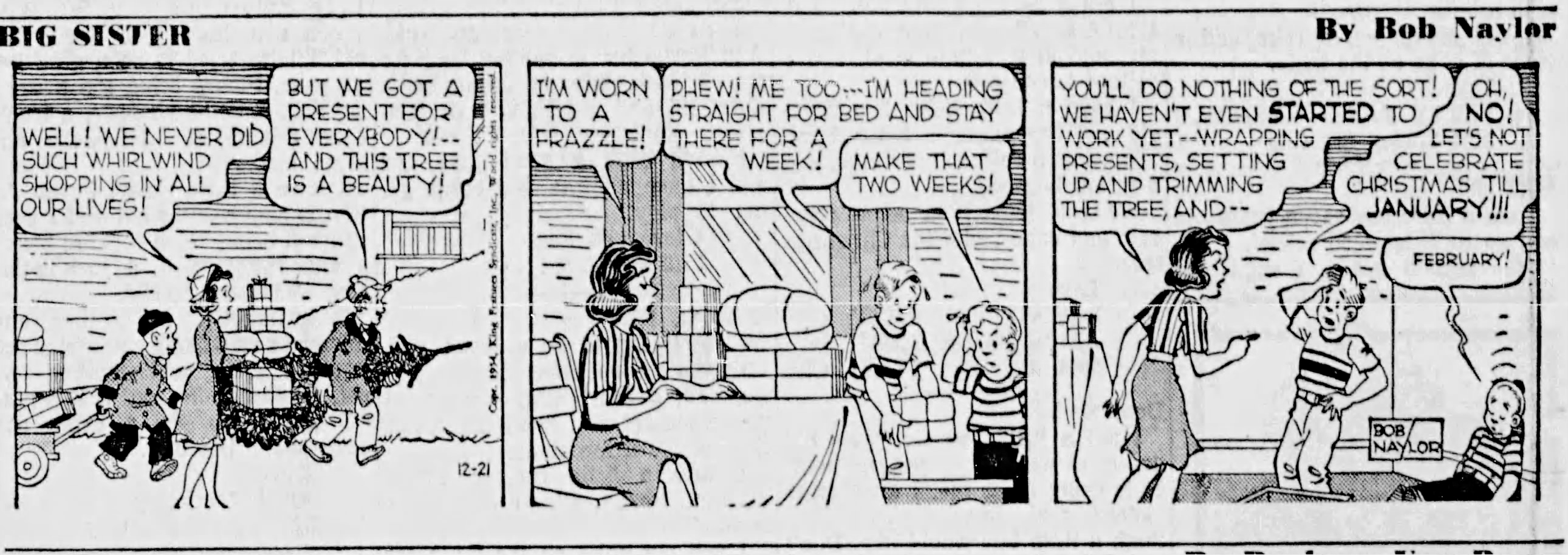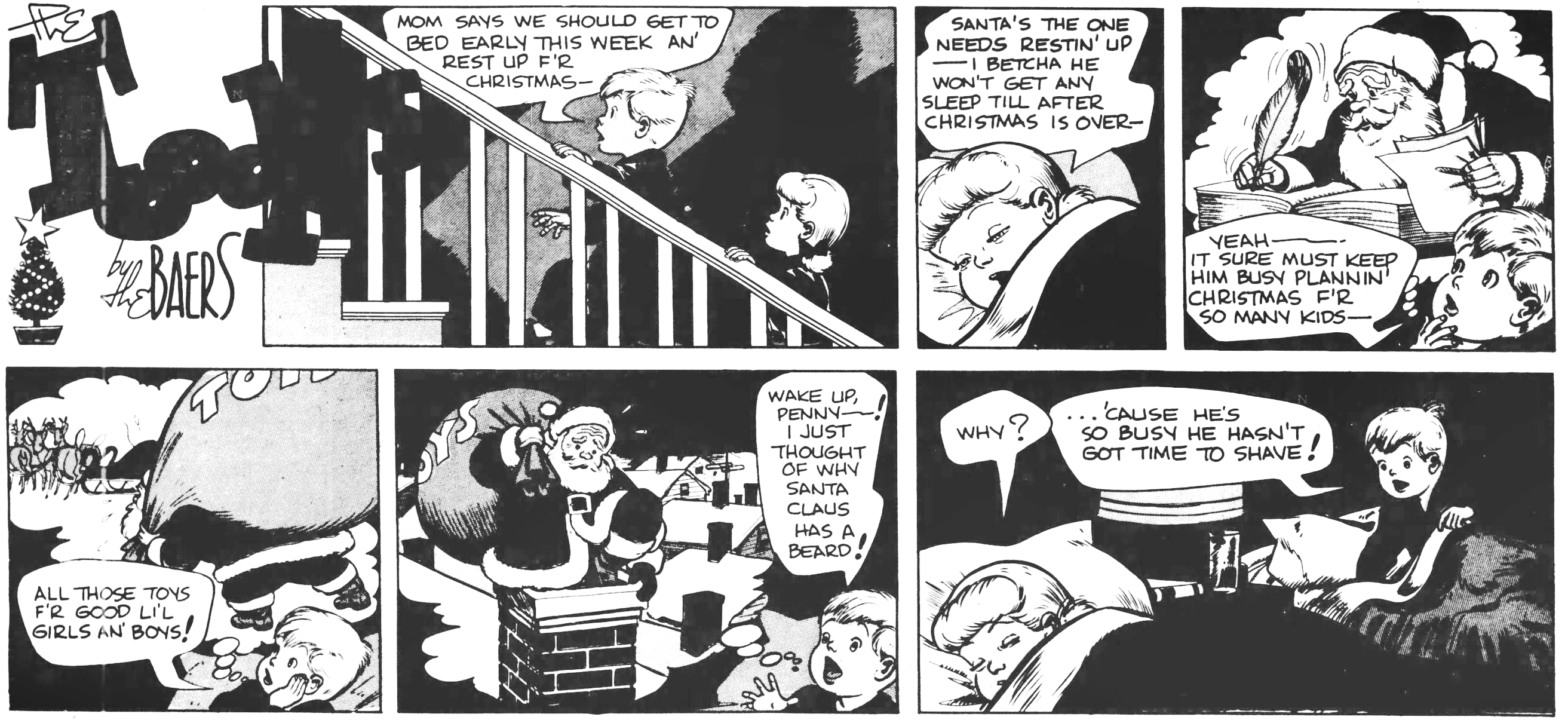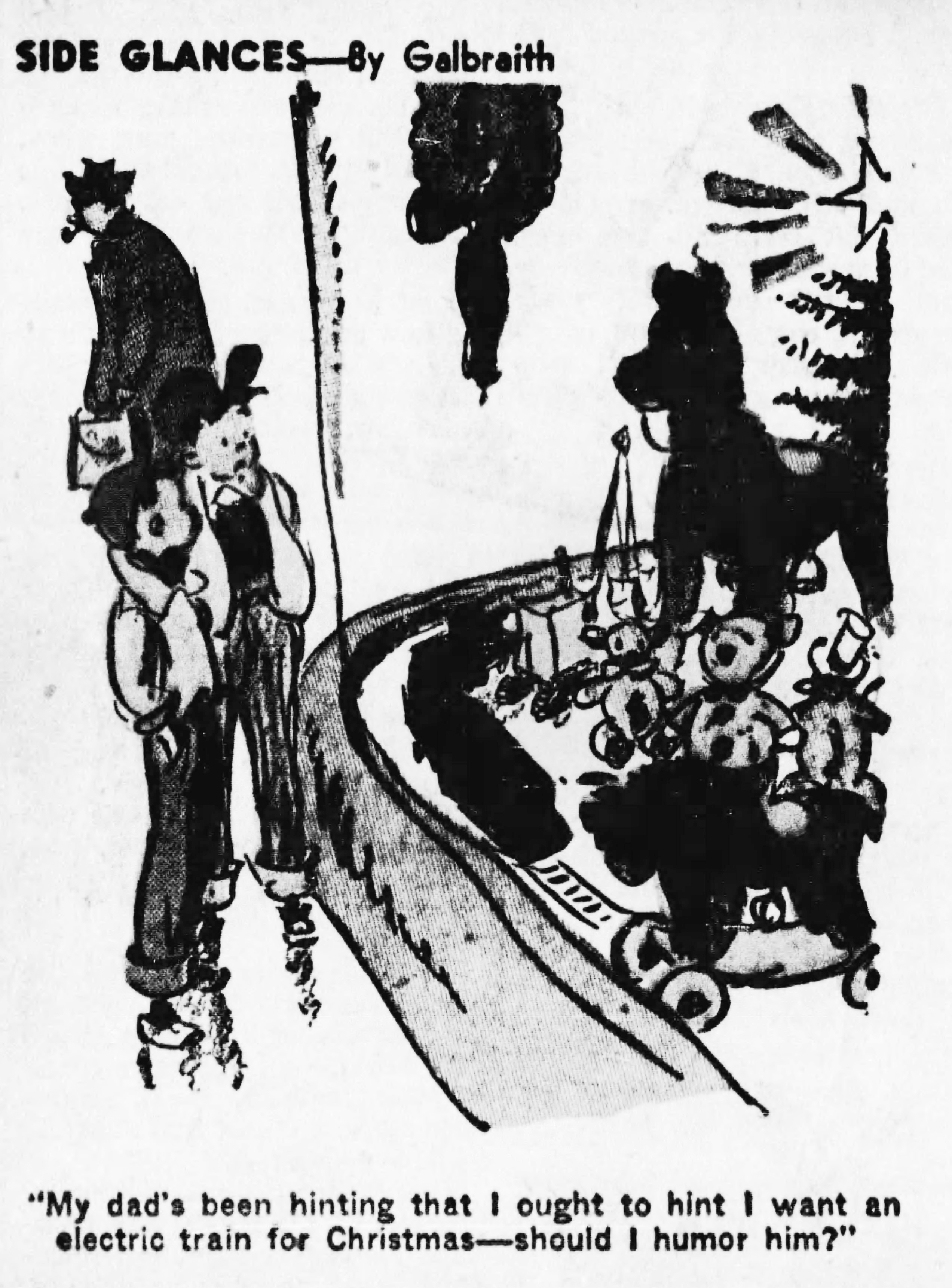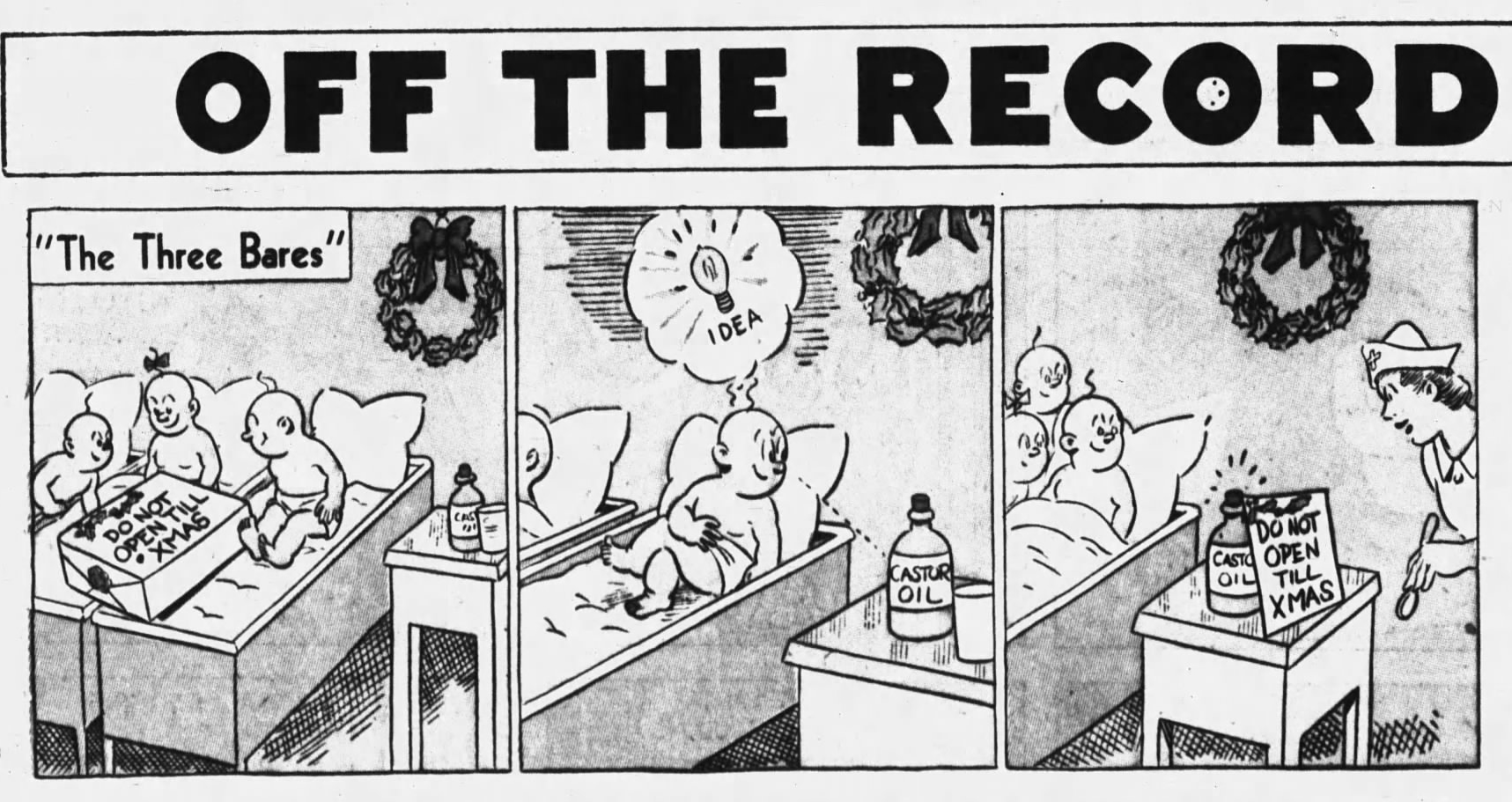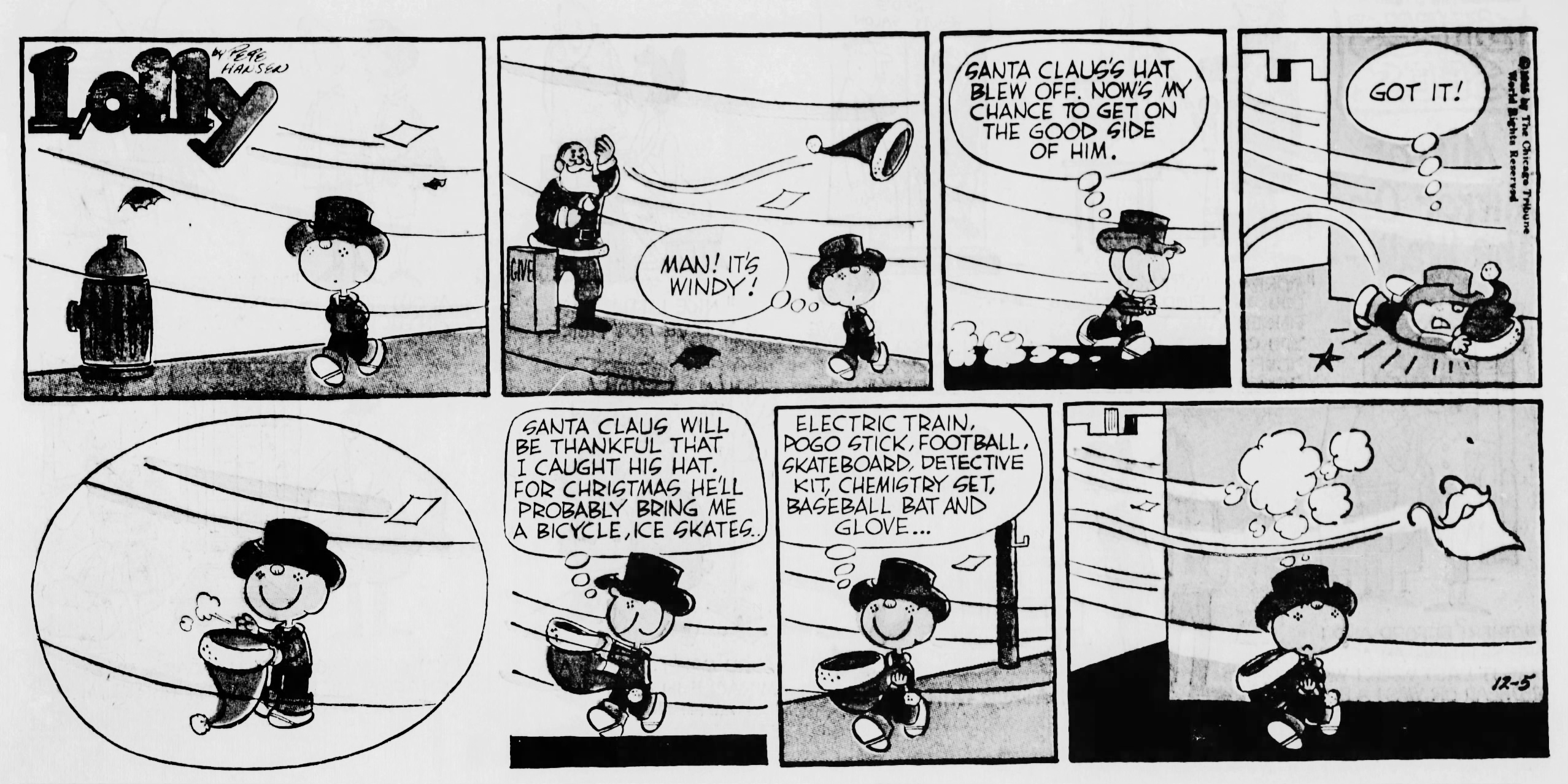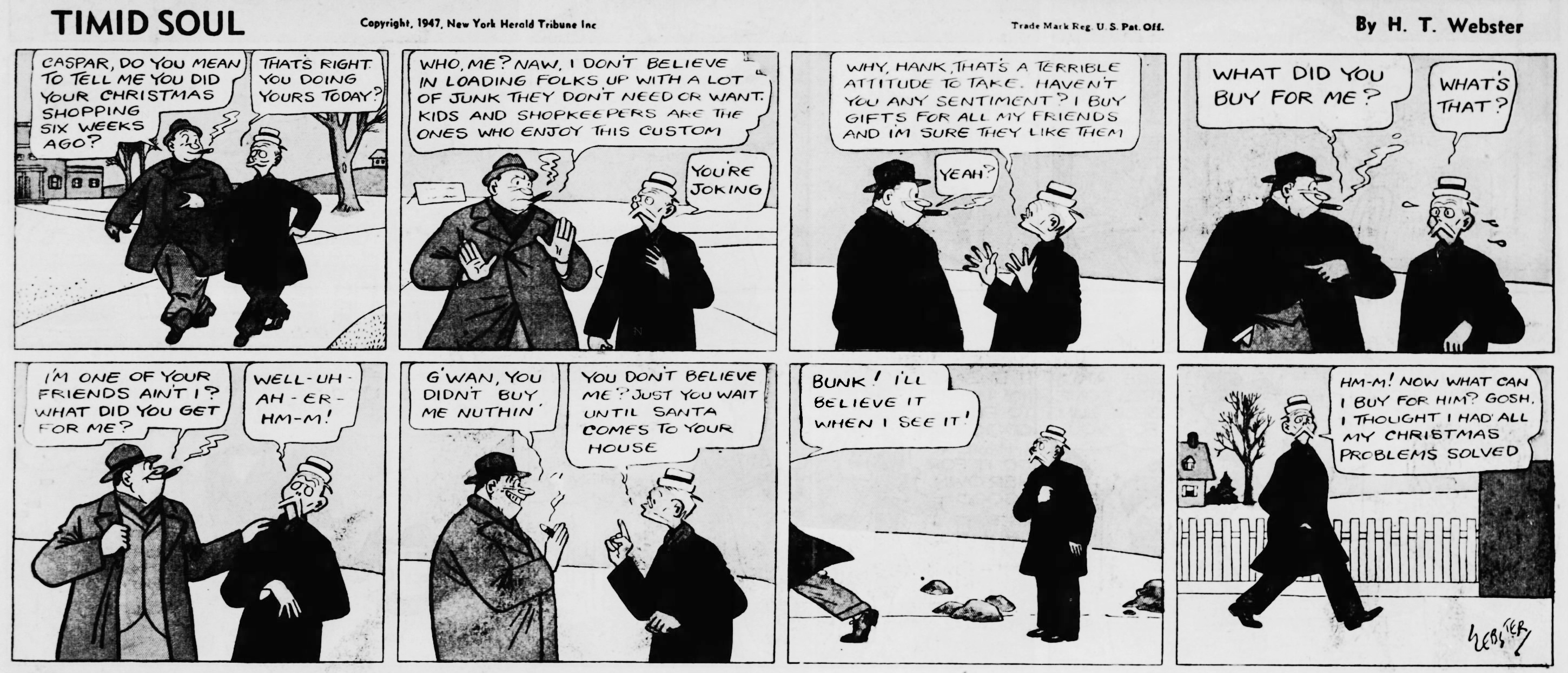Click the image to see a larger version.
Big Sister was created by Les Forgrave in 1928. Forgrave wrote and drew it until his death in 1953. It was taken over by his assistant, Jimmy McMenamy, who also died shortly thereafter, after which it passed to Bob Naylor. It ran until Naylor retired in 1972. The strip concerned a family of four, consisting of a father and three children. The father was a widower, so the titular big sister, Phoebe, took it upon herself to be the mother figure for her two younger brothers, Buddy and Donnie. Phoebe is mature beyond her years, and takes her role in the family very seriously (perhaps too seriously at times).
Today's example is from the Naylor years, and displays Phoebe's personality quite well. When I first read this while searching for strips to post this month, without even knowing the overall backstory, I could already tell the kind of relationship she was supposed to have with her brothers, and the role that she played. I wouldn't necessarily call her bossy, but she certainly acts with authority in the household, as we can see here.
I can understand how the boys feel here. A lot of preparation can go into a holiday or other important occasion, and often by the time the preparation's done you've had so much of the holiday already that you don't even feel like celebrating it. Still, I'm sure that after the boys have a break and then sleep on it, they'll be ready for some more Christmas the next day.
